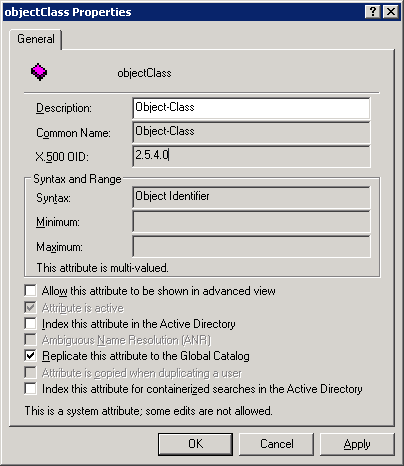In the vast landscape of Active Directory (AD), Object Identifiers (OIDs) serve as the backbone for ensuring the uniqueness and interoperability of directory objects. An OID in Active Directory is a globally unique identifier that is critical for distinguishing each object class and attribute within the AD schema, facilitating seamless integration and management of network resources.
This article delves into the intricacies of OIDs, exploring their structure, significance, issuance, and practical applications within AD environments. Join us as we unravel the layers behind OIDs, shedding light on their pivotal role in maintaining the integrity and efficiency of directory services.
Table of Contents:
- What is an Object Identifier?
- The Role of OIDs in Schema Management
- Obtaining and Managing OIDs
- Practical Applications of OIDs
- References

1. What is an Object Identifier?
An Object Identifier (OID) in Active Directory is a crucial component that ensures every object class and attribute within the AD schema is uniquely identifiable, both within a given directory and across interconnected directory systems. OIDs are expressed as a string of numbers separated by dots (e.g., 1.2.840.113556.1.8000.2554), adhering to a hierarchical naming convention that reflects their issuance and scope. This hierarchical structure allows OIDs to be globally unique, preventing conflicts that could arise from duplicate identifiers in large and complex network environments.

Structure and Assignment
The structure of an OID consists of a sequence of integers, each representing a node in a tree that collectively defines a unique path from the root to a specific object or attribute. The initial portion of an OID typically identifies the issuing authority (such as ANSI or ISO), followed by a sequence that represents organizational and possibly sub-organizational levels. For instance, the prefix “1.2.840” is commonly associated with US organizations, with subsequent numbers specifying individual entities and their subdivisions.
In Active Directory, each class of object and each attribute must have an OID assigned to it. These identifiers are not only crucial for the internal workings of AD but also for its interaction with external systems and services. They play a fundamental role in extending the schema, enabling administrators to introduce custom object classes and attributes to meet specific organizational needs.
Through OIDs, Active Directory achieves a level of organization, flexibility, and interoperability essential for modern networked environments, allowing for precise identification, customization, and integration of directory resources across diverse systems.
2. The Role of OIDs in Schema Management
Managing Object Classes and Attributes
Object Identifiers (OIDs) play a critical role in Active Directory schema management by uniquely defining each object class and attribute within the directory. This unique definition allows AD to accurately identify and apply the correct schema rules for any object it manages. For instance, when a new user account is created, AD uses the OID to determine the attributes that the user object can or must have, such as username, password, email address, and more. This systematization ensures consistency across the network, enabling seamless management of resources, policy enforcement, and access control.
Ensuring Global Uniqueness
The hierarchical structure of OIDs ensures global uniqueness, which is paramount in preventing conflicts within an Active Directory environment and when integrating with other directory services. This uniqueness is maintained through a system of registration and allocation managed by recognized issuing authorities. By adhering to a global standard, OIDs allow Active Directory to operate within a universal namespace, avoiding the potential overlap of identifiers that could lead to errors, inconsistencies, or security vulnerabilities.
3. Obtaining and Managing OIDs
Issuance by ANSI and ISO
In the United States, the American National Standards Institute (ANSI) is responsible for issuing OIDs, while globally, the International Organization for Standardization (ISO) oversees the registry of issuing authorities. These organizations ensure that each OID, once assigned, remains unique across different systems and applications worldwide. Entities requiring OIDs for custom Active Directory schema extensions must apply through these or other recognized authorities to obtain a unique namespace.
Obtaining OIDs for Custom Extensions
Organizations looking to extend their Active Directory schema with custom object classes or attributes need to obtain a unique OID. This process typically involves applying to a recognized issuing authority, like ANSI or ISO, for a root OID that uniquely identifies the organization. Once obtained, the organization can extend this root OID to create additional, unique identifiers for their custom schema elements. Microsoft also offers a script that generates a unique OID based on a GUID, providing a convenient method for organizations to obtain OIDs for internal use.
4. Practical Applications of OIDs
Extending the Active Directory Schema
OIDs are indispensable when extending the Active Directory schema to include custom object classes and attributes. These custom extensions can cater to specific organizational needs, such as integrating bespoke applications with AD or storing additional user information. By using OIDs, administrators can ensure that their custom schema elements do not conflict with existing or future AD schema elements or those from other directory services.
5. References
- Books:
- “Active Directory, 5th Edition” by Brian Desmond, Joe Richards, Robbie Allen, Alistair G. Lowe-Norris
- “Understanding and Deploying LDAP Directory Services” by Tim Howes, Mark Smith, Gordon S. Good
- RFCs: